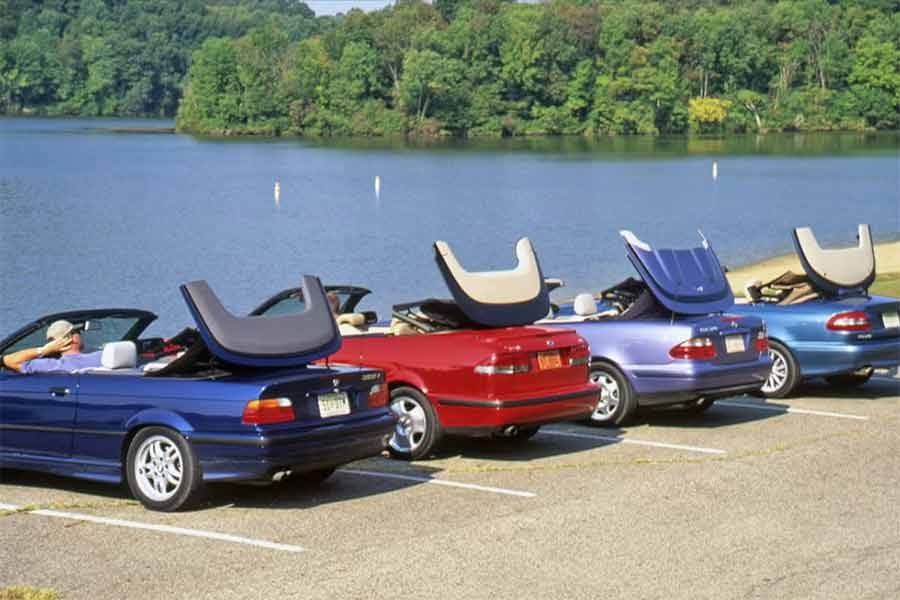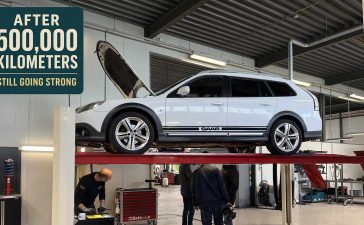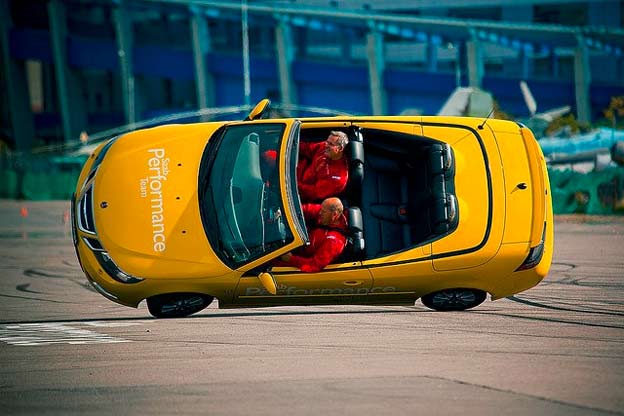Table of Contents
- 1 Looking Back at a Memorable Convertible Comparison Test
- 2 Saab’s Refined Evolution: The Transition from 900 to 9-3
- 3 Impressive Dynamics Where It Mattered Most
- 4 Turbocharged Practicality: Fuel Economy Meets Driving Pleasure
- 5 Interior and Comfort: A Distinctly Saab Approach
- 6 Reliability and Ownership Experience Over Time
- 7 Market Prospects and Classic Car Potential
- 8 Why the Saab 9-3 Convertible Still Matters
Looking Back at a Memorable Convertible Comparison Test
In December 1998, Car and Driver magazine published a definitive comparison of four prestigious European convertibles, notably the BMW 328i, Mercedes-Benz CLK320, Saab 9-3, and Volvo C70. Fast forward more than two decades, and these vehicles have become intriguing propositions on the used-car market.
While the BMW 328i emerged victorious, and the Mercedes-Benz CLK320 took second place, Saab enthusiasts were particularly intrigued by the third-place finish of the Saab 9-3 SE. Now, let’s delve deeper into the characteristics that made the Saab 9-3 Convertible notable back then—and why it remains a compelling choice today.
Saab’s Refined Evolution: The Transition from 900 to 9-3
The Saab 9-3og represented a critical upgrade over its predecessor, the Saab 900, which had won an earlier convertible showdown in 1994. The transition from the 900 to the 9-3 wasn’t superficial; Saab implemented over 1,000 substantial updates, fundamentally enhancing the structural integrity and driving dynamics of the car.

The redesigned top, equipped with a simpler, single-latch mechanism and hydraulically powered operation instead of multiple electric motors, was more reliable and user-friendly. A significantly enlarged glass rear window provided improved visibility—a practical consideration often overlooked by other manufacturers. Enhanced sound insulation and integrated drip channels made for a notably quieter and drier cabin, affirming Saab’s attention to detail and daily usability.
Impressive Dynamics Where It Mattered Most
Back in the twisty roads of southern Ohio where the “Car and Driver” crew conducted their rigorous tests, the Saab 9-3 SE showcased its true strengths. Despite having a comparatively modest 185 horsepower from its turbocharged inline-4, the Saab was agile, responsive, and confidence-inspiring in challenging conditions. It was specifically praised for its linear steering and exceptional road-holding capability (0.80g lateral acceleration). Furthermore, the braking performance was exemplary, stopping from 70 mph in a commendably short 178 feet.
Enthusiasts appreciated the predictable handling characteristics, making it not just fun but also safe and manageable on twisty roads. As Car and Driver described, the Saab was “fastest and smoothest” in the lane-change test—attributes that speak to Saab’s meticulous suspension tuning and chassis balance. For prospective buyers today, these dynamic virtues underscore the enduring appeal of the 9-3 Convertible, especially for those seeking genuine driver involvement.
Turbocharged Practicality: Fuel Economy Meets Driving Pleasure
One of the intriguing advantages of the Saab 9-3 back in the day—and indeed still appealing today—was its practicality paired with turbocharged fun. Despite employing a performance-oriented turbocharged powertrain, the 9-3 SE managed a commendable 23 mpg during Car and Driver’s demanding 600-mile test trip, equaling the more sedate BMW 328i. This fuel efficiency, combined with a capacious trunk and foldable rear seats, adds practical allure that continues to make a used 9-3 Convertible a viable daily driver option.
Even in 1999, Saab demonstrated that driving pleasure and practicality didn’t have to be mutually exclusive—a characteristic that Saab enthusiasts have cherished throughout the marque’s history.
Interior and Comfort: A Distinctly Saab Approach
The interior of the Saab 9-3 Convertible, though not as opulent as the Mercedes-Benz CLK320, carried a distinct Scandinavian charm and functional appeal. Yes, the materials might have seemed a bit utilitarian compared to the plushness of its German counterparts, yet the Saab interior design prioritized ergonomics, straightforwardness, and durability—traits still valued by discerning Saab aficionados today.
Front seats offered superb comfort for long journeys, with ample bolstering and effective lumbar support. However, the front footwells were slightly narrow, a compromise due to Saab’s front-wheel-drive architecture. Accessing rear seats was admittedly challenging, yet this was a common compromise among convertibles of this size and era. Still, for occasional use, the Saab’s rear accommodations were sufficient, especially compared to more cramped alternatives such as the BMW.

Reliability and Ownership Experience Over Time
Looking at Saab’s durability over the long term—crucial for anyone considering a nearly 25-year-old car—it’s clear the Saab 9-3 Convertible is a solid pick. While earlier Saab convertibles were sometimes critiqued for structural rigidity issues, the 9-3 represented a significant step forward. Many owners today report few serious structural or mechanical issues, particularly when compared to similarly aged premium European rivals.
Parts availability, despite Saab’s cessation as an automaker in 2011, remains surprisingly robust, with numerous specialized suppliers and enthusiast groups ensuring strong aftermarket support. Ownership costs have remained reasonable, bolstered by a passionate global Saab community sharing knowledge and resources readily online through dedicated platforms like SaabCentral and SaabPlanet.
Market Prospects and Classic Car Potential
As a classic-in-the-making, the Saab 9-3 Convertible occupies a special niche. Unlike the ubiquitous BMW and Mercedes-Benz convertibles from the same period, the Saab offers distinctive style, heritage, and rarity—elements highly valued by collectors. Given its unique Swedish heritage and the marque’s loyal following, the 9-3 Convertible’s value appreciation potential could indeed prove promising for well-preserved examples.
Today, finding a well-maintained Saab 9-3 Convertible remains remarkably straightforward, with around 108 examples currently listed across Europe on popular marketplaces such as AutoScout24. Prices remain accessible, offering excellent entry points for enthusiasts or aspiring collectors interested in enjoying this engaging and distinctive convertible. For the best long-term value and driving satisfaction, prioritize examples featuring documented maintenance history and, preferably, manual transmissions due to their rarity and enthusiast appeal.
Why the Saab 9-3 Convertible Still Matters
Although “Car and Driver” ranked it third among four luxury convertibles in 1999, the Saab 9-3 SE Convertible continues to present itself as a compelling choice, characterized by its unique blend of practicality, driving pleasure, and timeless Scandinavian style. Its strengths in handling, braking, and fuel efficiency remain relevant today, ensuring a uniquely satisfying ownership experience even 25 years later.
For today’s classic car enthusiast or Saab loyalist, a carefully chosen Saab 9-3 Convertible represents not just nostalgic charm but a genuinely practical and enjoyable vehicle that promises years of spirited motoring. As such, the Saab 9-3 Convertible richly deserves serious consideration when revisiting late-’90s premium convertibles—a timeless reminder of Saab’s thoughtful engineering and enthusiast-driven design.
(Source: Original review can be accessed via Car and Driver)











